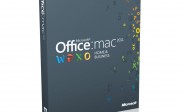Handle encountered Problems of Outlook 2011 for Mac
There are some basic steps for rebuilding of the identity database, for the purpose of resolution of problems with the Outlook for Mac corruption. The identity database is comprised of the contacts, tasks, email messages, calendar items as well as accounts settings. The location of the identity is the Users Folders data from Microsoft.
The Microsoft Database Utility mode is used for the rebuilding of the database from the damaged stage. Before the rebuilding is done by the Database Utility Mode, a backup copy is created and kept in a specified location, before the Outlook 2011 Mac repair is done.
The symptoms encountered are as follows:
- Outlook is not opening and is not responding and has quit all of a sudden
- The items are not opening or the items opened are not the ones selected by the user
- Incorrect display of the Outlook contacts
- Disappearance of clippings on the scrap book
- There are blank lines in the Outlook contacts list or the message list for Outlook
- Calendar, contacts were added and not displayed
- A Blank Office Reminders Window appears on the screen
- Outlook is giving search results, not matching with the search criteria
There are certain steps for the rebuilding of the identity database. The steps are as follows:
Quit from all Applications
There is a menu called Applications Name on the toolbar, which is on the top of the screen. Next, the option Quit is being selected.
If still not being able to quit an application, the user can press the ‘Command’ and ‘Option’ keys and then the Escape ley. The Forced Quit Window appears and the application selected will be quit. The Window should be closed with the Red close button, at the corner of the Window.
The user must remember that this never operates on the Finder option.
Determination of the Hard Disk Space
For any type of database maintenance, three times the current size of the Outlook Identity will determine the amount of disk space to be kept. Generally, three times disk space is required. This, do not include the Virtual Memory space. The allocation of the disk space for the Outlook Identity is needed for the data received by the Identity. Wasted spaces may develop due to the addition and the deletion of the notes, messages, appointment and the tasks. The identity size can be determined by the following few steps:
- The Go and the Home option are selected in the Finder
- User Data Folder of Microsoft is opened
- Identity Folder of Office 2011 is opened and clicked
- The size of the database is noted by the following steps:
File Menu -> Get Info-> Get Information is clicked
The current identity is discovered and being backed up
The backup of the identity happens with the following steps:
Finder-> Go-> Home-> The documents Folder is opened
Next, the Microsoft User Data folder is being opened.
The Office 2011 Identity folder is either right-clicked or Control-clicked and then the Duplicate option is clicked, so that a copy of the folder is created.
This backup can be used by data recovery software, which works better for the identities, which cannot be rebuilt.
The Database is Rebuilt
Before the database is rebuilt then, we need to be sure that the problem is not linked with damaged or any fragmented hard disk.
First, we need to quit all applications
Outlook 2011 is started, while pressing down the Option key
The database, which has to be maintained, is to be selected and then the_Rebuild_option is clicked, the rebuilding of the database requires a read and write permission for the identity folder.
A new Identity is Created
A new identity is created, when Outlook operates under two different conditions like working at home or working at outside.
Each and every identity has such items like tasks, calendars, email, address books and account settings.
Outlook is capable of creating multiple numbers of identity folders.
The first step is the quitting of all applications. The Outlook icon and the Options key on the keyboard are clicked. The plus sign is clicked and a name of the identity is typed.
This new identity can be set as a default by the following steps:
The selected new identity – > Action button->Set as Default
All the previous steps should be able to resolve the problem that we encountered. However, if that fails to happen, then the inference is that the Outlook database is damaged beyond the stage of repair. In that case, one needs to start from the beginning, if neither there is any backup nor there are any other sources of data. The identity folder of the Outlook 2011, in such a circumstance is dragged into the Trash and then Outlook is restarted.
Some professional software are also available for the recovery of the outlook backup files (.OLM), created in MS Outlook for Mac 2011. The precious mail items like messages, tasks, calendars, address books and notes are recovered. The severely corrupted .OLM files can also be recovered. A preview can ensure the viewing of all the mail objects, before the recovery process. This one file needs to be imported to the Outlook for Mac 2011 and then viewed.

